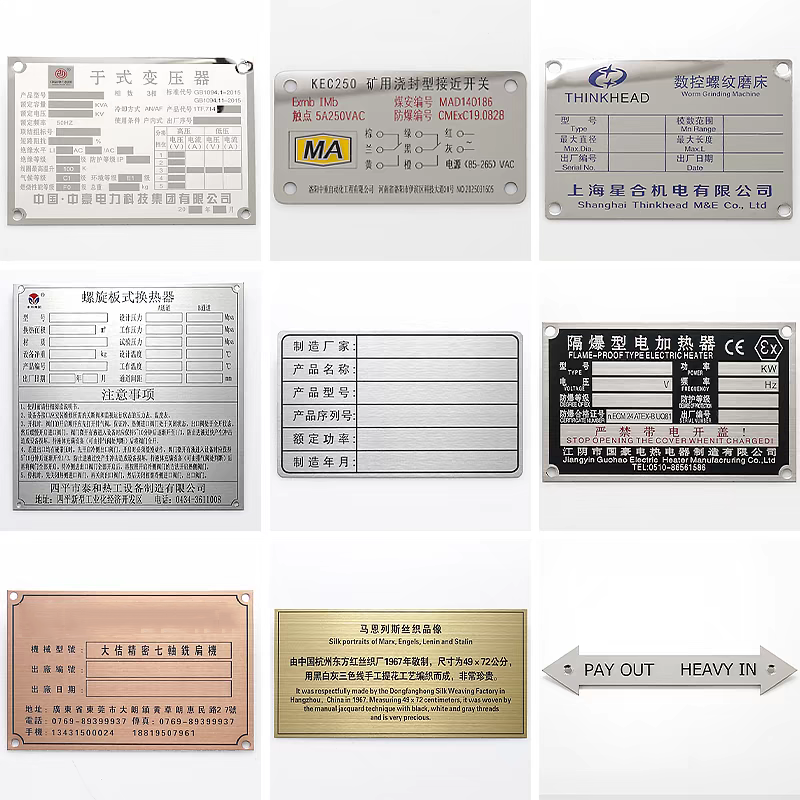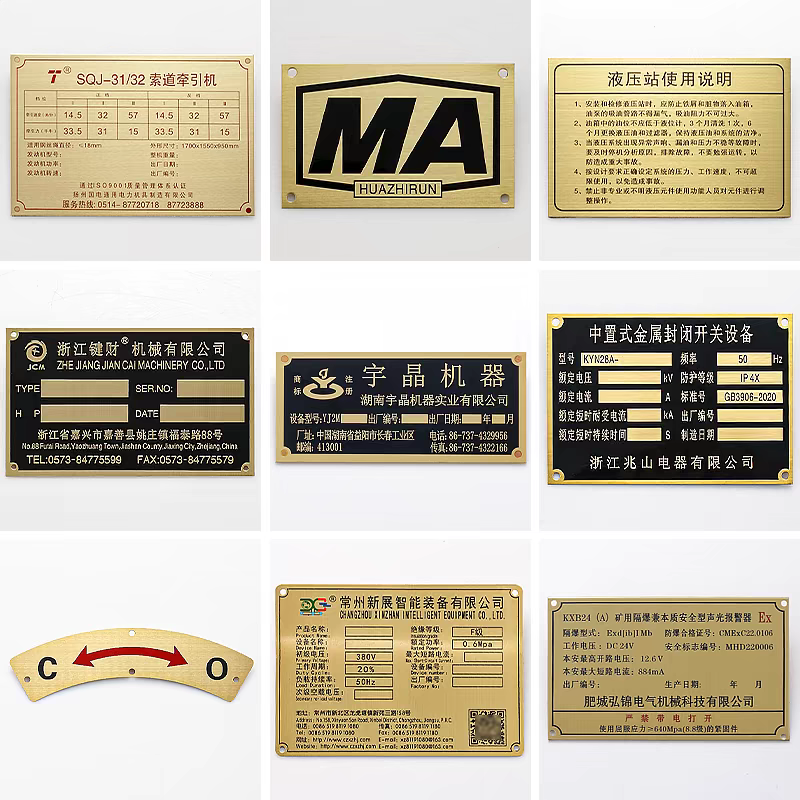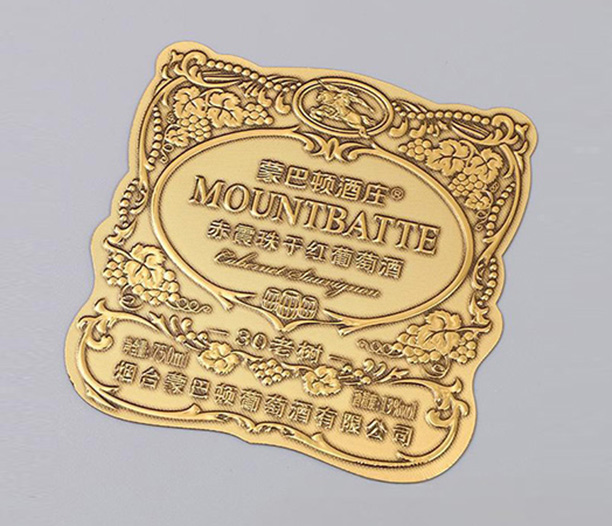Walking into a server room or a manufacturing plant without proper cable labeling is like entering a library where all the books have blank spines. The potential for knowledge is there, but finding the right information is a slow, frustrating, and error-prone process. In our interconnected world, the humble cable identification tag is a cornerstone of organization, safety, and efficiency. These small markers do much more than just label a wire; they are critical tools for communication, maintenance, and disaster prevention. This article delves into the essential aspects of cable identification tags, providing a clear understanding of why they are indispensable in modern infrastructure.

The Critical Role of Cable Identification Tags in Modern Infrastructure
At its core, a cable identification tag is a label or marker attached to a wire or cable to convey specific information. This simple act of identification transforms a tangled web of indistinguishable lines into a logical, manageable system. In data centers, a misidentified network cable can lead to hours of downtime as technicians trace connections. In industrial settings, incorrectly identifying a power cable can result in catastrophic equipment failure or severe safety hazards. Cable identification tags serve as the first line of defense against such chaos, providing immediate visual cues that enable quick decision-making. They are the universal language spoken by electricians, network engineers, and facility managers, ensuring that everyone is on the same page, reducing human error, and streamlining every interaction with the cabling system.
Exploring the Different Types of Cable Identification Tags
Not all identification needs are the same, which is why the market offers a diverse range of cable identification tags. Selecting the right type is crucial for long-term performance and legibility.
Wrap-Around Tags: These are some of the most common tags, made from vinyl or polyester. They wrap around the cable and fasten securely, providing a 360-degree printable surface. This makes them ideal for situations where the cable may be viewed from any angle. They are highly versatile and used extensively in data centers and for control panel wiring.
Flag Tags: These tags are attached at one end, hanging from the cable like a flag. They offer a large, flat surface for printing detailed information, such as circuit numbers, destination ports, and voltage ratings. Flag-style cable identification tags are perfect for patch panels and terminal blocks where space is tight but information needs to be comprehensive.
Heat-Shrink Tags: For permanent and durable identification, heat-shrink tags are the gold standard. The printed sleeve is slid onto the cable before the connector is terminated. When heat is applied, the sleeve shrinks tightly to form a tough, sealed layer that is resistant to abrasion, chemicals, and extreme temperatures. This type is essential in harsh environments like automotive, aerospace, and outdoor industrial applications.
Self-Laminating Tags: These tags feature a clear, blank tail that wraps over the printed area, protecting it from wear, smudging, and fading. The printed information remains perfectly legible while being shielded from environmental factors. They are an excellent choice for environments with exposure to moisture, oils, or frequent handling.
Choosing the Right Material for Durability and Performance
The material of a cable identification tag directly determines its lifespan and suitability for an environment. A tag that works perfectly in an office server rack may fail completely on a factory floor.
Plastic (PVC, Vinyl, Polyester): These are general-purpose materials known for their flexibility, durability, and resistance to moisture and chemicals. Polyester, in particular, offers excellent thermal stability and resistance to most solvents, making it a robust choice for many industrial and commercial applications.
Heat-Shrink Tubing (Polyolefin): This material is engineered to contract radially when heated, creating a permanent, tight seal. It provides superior abrasion resistance and environmental protection, ensuring the identification remains intact for the life of the cable assembly.
Metal Tags: For extreme conditions involving very high temperatures or the need for physical ruggedness, metal cable identification tags made from aluminum or stainless steel are used. They are often etched or stamped with information and attached with sturdy wires or bands. You'll find these in power generation, shipbuilding, and heavy machinery.
Synthetic Materials (Tyvek): For temporary identification or in clean, dry environments, Tyvek offers a cost-effective, printable, and tear-resistant option. However, it is not suitable for areas with exposure to fluids or significant physical contact.

The Art of Information: What to Print on Your Tags
A cable identification tag is only as useful as the information it carries. Clarity, consistency, and completeness are key. A well-designed tag should include:
Unique Identifier: A circuit number, cable ID, or asset number that is referenced in documentation.
Source and Destination: Clearly stating where the cable originates and where it terminates (e.g., "Panel A, Breaker 15 to Motor 7").
Voltage and Phase: Critical safety information for electrical cables to prevent accidents during maintenance.
System Type: Indicating whether the cable is for data, power, control, or fiber optics.
Date of Installation: Useful for warranty tracking and preventive maintenance schedules.
Using a standardized format across your entire facility is essential. This often involves using a professional label maker or pre-printed cable identification tags to ensure legibility and professionalism.
Best Practices for Installing and Maintaining Cable Tags
Proper installation is the final step in ensuring your cable identification tags system is effective.
Consistent Placement: Tags should be placed in a consistent, visible location. A common practice is to place them within 12 inches of termination points on both ends.
Secure Attachment: Ensure the tag is fastened securely so it cannot slide along the cable or fall off. For wrap-around tags, make sure the adhesive seal is fully closed.
Avoid Obstructions: Do not place tags where they could interfere with moving parts, connectors, or ventilation.
Regular Audits: Periodically audit your labeling system as part of your maintenance routine. Check for faded, missing, or damaged tags and replace them promptly to maintain system integrity. A well-maintained system of cable identification tags is a living document that reflects the current state of your infrastructure.
Frequently Asked Questions About Cable Identification Tags
Q1: What is the best type of cable identification tag for outdoor use?
A1: For outdoor applications, you need a tag that can withstand UV radiation, moisture, and temperature fluctuations. Heat-shrink cable identification tags or durable plastic tags made from polyester with a UV-resistant laminate are the best choices. They provide a sealed, weatherproof barrier that protects the printed information from fading and degradation.
Q2: Can I write on cable tags by hand, or should they be printed?
A2: While hand-writing with a permanent, industrial-grade marker is possible for temporary fixes, it is not recommended for permanent installations. Handwriting can smudge, fade, and is often difficult to read. Professionally printed cable identification tags, whether printed on-site with a dedicated label maker or ordered pre-printed, offer superior legibility, durability, and a more professional appearance.
Q3: How often should I check and replace my cable identification tags?
A3: It is good practice to visually inspect tags during any routine maintenance or when modifications are made to the system. There is no fixed timeline, but tags should be replaced immediately if they become loose, damaged, illegible, or if the information they contain is no longer accurate. A formal audit of all cable identification tags should be conducted at least once every two to three years.
Q4: Are there specific standards or regulations governing cable identification?
A4: Yes, many industries have specific standards. For example, the National Electrical Code (NEC) in the United States has requirements for identifying voltage, phase, and circuit origin in certain applications. Data centers often follow standards like TIA-606-B for administration. Always consult the relevant local and industry-specific regulations to ensure your cable identification tags are compliant.
Q5: What is the main difference between a cable tag and a wire marker?
A5: The terms are sometimes used interchangeably, but generally, a "wire marker" refers to a smaller label used on individual conductors within a cable or a control panel, often using a number or letter code. A cable identification tag is typically larger and is used on the outer jacket of a multi-conductor cable or a cable bundle, containing more detailed information like source, destination, and circuit details.






